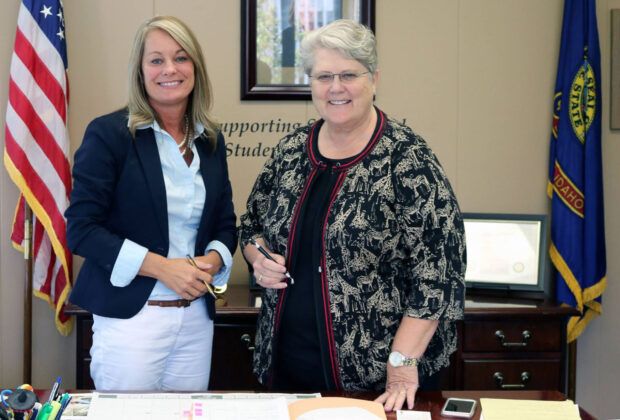For the second consecutive year, Idaho missed all of its yearly benchmarks in math and English for vulnerable student populations.
Idaho missed all 22 of the math and English language arts interim targets that state leaders identified in the consolidated state plan to comply with the federal Every Student Succeeds Act, according to data released by the State Department of Education.
Idaho schools missed English and math goals for the “all students” categories as well as goals tied to vulnerable student populations, including Hispanics and Latinos, students with disabilities, economically disadvantaged students and Black students.
“It’s a very big concern,” said State Board of Education member Linda Clark. “We, as a Board, are committed and want to make sure the districts and classrooms have the kind of resources they need.”
The numbers show that Idaho is failing in its goals to reduce the percent of at-risk students and minorities who don’t score proficient or better. In most cases, the gaps are getting wider between the goals and actual achievement.
For instance, the 2019 interim target for the percent of Hispanic and Latino students scoring at proficient or better in math was 35 percent. The actual number for 2019 was 25.9 percent. In 2018, Idaho also missed its interim target in math for Hispanic and Latino students. In 2018 the goal was 30.7 percent proficient, but the actual score was 25.2 percent proficient. That means that from 2018 to 2019, the percent of Hispanic or Latino students scoring at least proficient increased by just .7 percent while the goal was a 9.1 percent increase.
Clark said there are several factors at play. Referencing fall Idaho Reading Indicator (IRI) scores, she said half of students are already behind when they arrive for kindergarten.
“Those students are playing catch-up most all of their K-12 career,” Clark said. “It’s just really tough for them to catch up if they don’t have those skills when they come in.”
She also said the process of developing the ESSA plan, the accountability system and long-term education goals was different than other compliance plans. ESSA shifts much of the responsibility away from the federal government towards the state and its schools and Idaho leaders “had to deal with a lot of unknowns” as they worked to come up with goals that were appropriate, achievable and also aspirational, Clark said.
Clark said it’s time for the State Board to revisit its ESSA plan and goals.
“Yes it absolutely time to revisit it and ask some hard question about whether those goals are appropriate and what we can do to improve student achievement,” Clark said.
Idaho’s ESSA plan specifically calls for reducing the percentage of students not scoring proficient by one-third over a six-year time period.
“That is ambitious,” said Karlynn Laraway, the SDE’s director of assessment and accountability. “That requires a concerted effort across every school in the state and we are seeing that effort and that work from our students and teacher, we are seeing improvement in some areas.
“We also know in some subgroups that gap is wide,” she continued. “ESSA is about equity for all students, underserved and at-risk and we continue to look at those.”
The longterm goals don’t come due until 2022, so Idaho still has time to recover. But in order to measure progress toward that 2022 goal, Idaho education leaders set yearly interim targets to ensure the state is on track to meet the goal. So far, Idaho hasn’t met any of the 22 interim targets for English and math.
Idaho also missed all of its 2018 interim targets for high school graduation rates. Data on 2019 graduation rates is not yet available.
Idaho made one goal in “progress toward language proficiency” in 2018 and 2019, Laraway said. The targets for that category have since been amended and Idaho would not have hit the 2019 number under the new target.

The goals for English, math and graduation rates were not trivial or rushed together. SDE officials spent two years compiling public feedback and developing the consolidated state plan, which includes the goals. Then, the Idaho State Board of Education voted unanimously to approve the plan. Former Gov. Butch Otter signed off on it, and State Superintendent of Public Instruction Sherri Ybarra and Clark posed for photos before signing it.
From there, U.S. Secretary of Education Betsy DeVos approved Idaho’s plan.
However, while the plan was being developed, several legislators and educators said they were kept in the dark. And some of them were skeptical from the beginning.
“To me, we haven’t talked about the main issue here: How are we going to reach those goals?” Rep. Ryan Kerby asked during a June 26, 2017 ESSA hearing. “I haven’t heard any kind of plan on how to reach them.”
When asked if the goals were unrealistic or if Idaho is failing it’s most vulnerable students, Laraway emphasized that some schools are exceeding their goals and that is important to keep focused on making progress statewide.
“We’re proud of our teachers, we’re proud of our students,” Laraway said. “We continue to see improvement and we want to make sure we don’t focus solely on what we haven’t made, but what we have made.”
Laraway said she isn’t aware of any accountability — or consequences — from the feds for failing to meet interim targets or the longterm goals.
